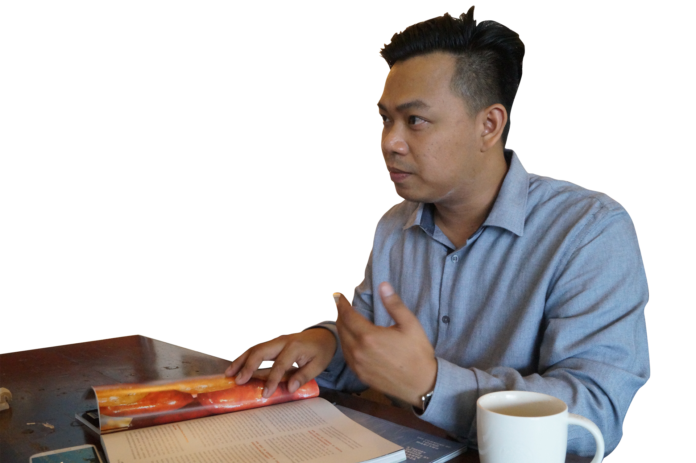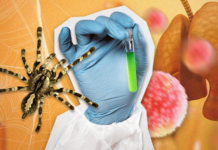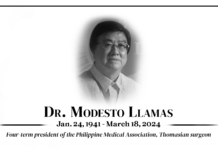A BOOK can finally help mothers to waive the apron and turn their usual Filipino recipes into something extraordinary.
Richmond Ejanda’s “Kuisina Gastronomika” showcases food advancements in terms of techniques, equipment and essential know-hows as the first gastronomy-cum-Filipino food culture guidebook.
Ejanda, a Food Technology graduate from UST, is currently taking his masteral level of studies in Food Science at the Cavite State University Graduate School and is the chief executive officer of Food, Health & Science magazine.
The book has not been officially launched but limited releases were already distributed among major bookstores nationwide. Ejanda worked on the book for four years.
“People nowadays [enjoy] their smartphone with food photo-blogging, especially if they have tried something new. [Take for instance] the smoking gun burger,” Ejanda said in an interview with the Varsitarian.
He said common food trends on social media are evidence that people are keen on the usage of somesthetic senses—such as smell, sight and taste—in food perception.
But the book also considers intricacies in molecular composition in determining factors such as flavor and taste.
Kuisina Gastronomika boasts content dwelling in disciplines such as biology, biotechnology, chemistry, genomics, computer and materials science, microbiology, nutrition, engineering and toxicology. The book will explore their application to create competitive and modernized food products.
He said a smoking gun burger is appealing because it is infused with the divine aroma of hickory smoke and prepared on a wooden slab which enclosed by a glass cover that explodes with flavor as soon as it is opened.
The book also tackled the progress of modern equipment to ease-aid development in food industry such as the “cryovac,” a sous vide gadget used to freeze-dry and eliminate gas in processed and packed products.
A wide range of instruments were also cited—from handheld device to commercial-ready apparatus such as immersion blender and dehydrator, which are all essential to provide food innovators and just these curious ones with more accurate and faster production and preparation.
“In the chapter for food product development, we have this systematic way of innovating food from a molecular basis. For instance, the application of hydrocolloid properties in pasta that caused a jelly-like texture and appearance of my malunggay, basil and parsley pasta,” he added.
Not an ordinary cook book
Kuisina Gastronomika also featured modifications on the original ingredients and reverse food engineering of certain recipes. Alongside the compiled recipes are profiles and commentaries from chefs known for their corresponding specialties, from nanay’s best dishes to luscious pastry desserts. One such chef is Myons French Mediterranean Cuisine executive chef Ivan Yalong, also a food technology alumnus from the University.
Salt and pepper adobo pork ribs, beef bourguignon, crispy pork belly wrapped with pandan crepe, Filipino seafood paella and crispy peanut crusted porkbelly sinigang are few of Yalong’s recipes featured inside the book.
“Dito naman may mga fusion of cuisines gaya ng caldereta na adobo which may be called as ‘calderobo.’ They are trying to be extraordinary and experimental at the same time,” Ejanda said.
He also featured some integrated and innovative recipes on the latter chapter such as the usage of Carboxymethylcellulose or cellulose gum to stabilize the structure of sorbet and ice cream. Locust bean gum, guar gum carrageenan and spices were also mentioned to be effective additives to extend the shelf life and appearance of some recipes.
According to Ejanda, there is an existing art of deconstructing food through utilizing components of raw materials to reintroduce revolutionized food products such as creating a new dip from a chocolate mint plant.
“When I saw the ‘chocolate mint plant’ or scientifically known Mentha x piperita, I asked the vendors about the plant and bought ten pots then made an experiment in my kitchen,” he added. The result of his experiment gave rise to create chocolate mint gel that is a perfect-ready dip for lamb chops.
Ejanda considers this book to acquaint food technologists in the limelight for professional and academic fields—where specific roles were cited in the expertise on product development, quality assurance and control, food chemistry and food analysis, regulatory, food microbiology, food safety, food engineering and sensory evaluation and consumer testing.














